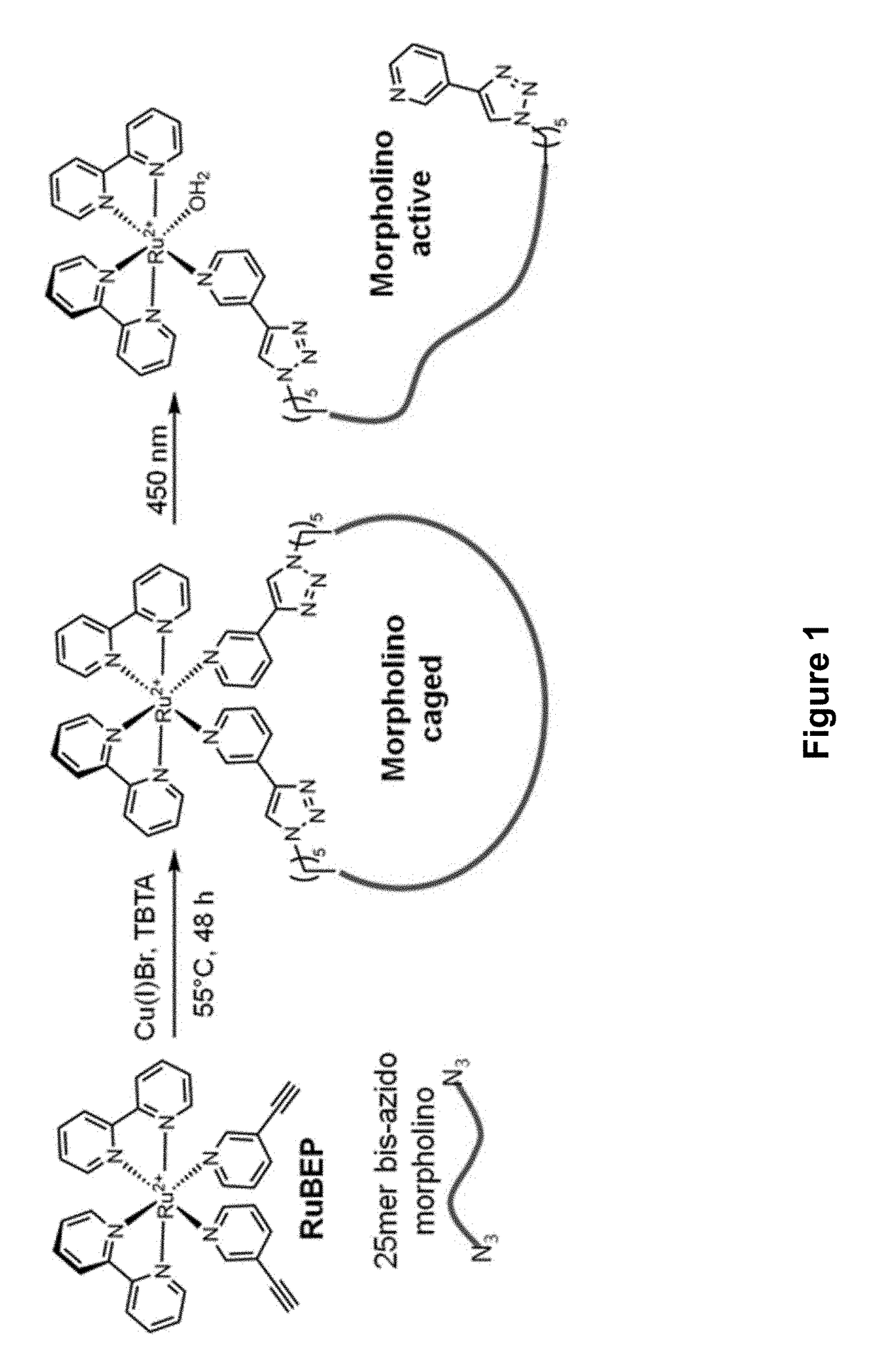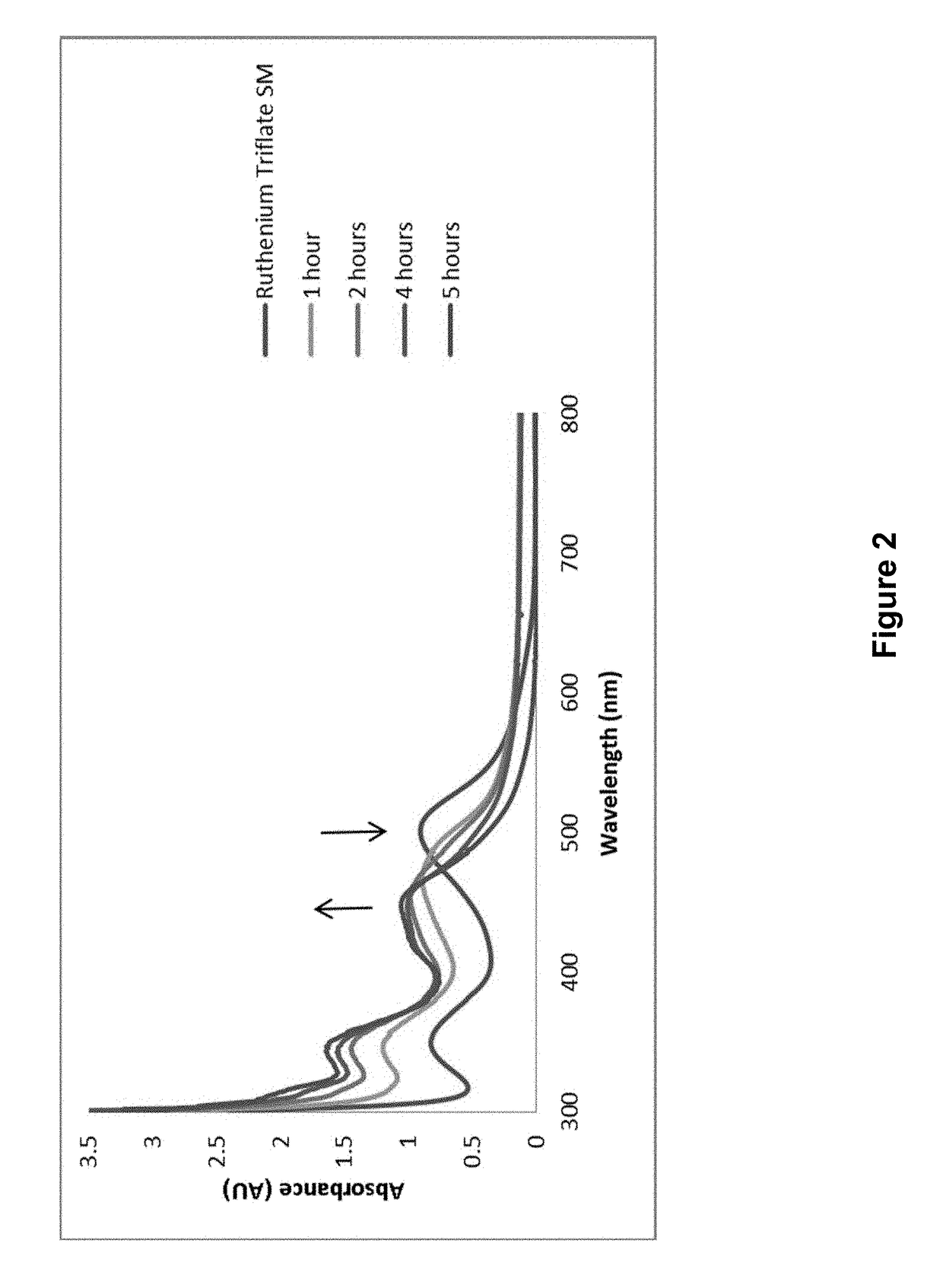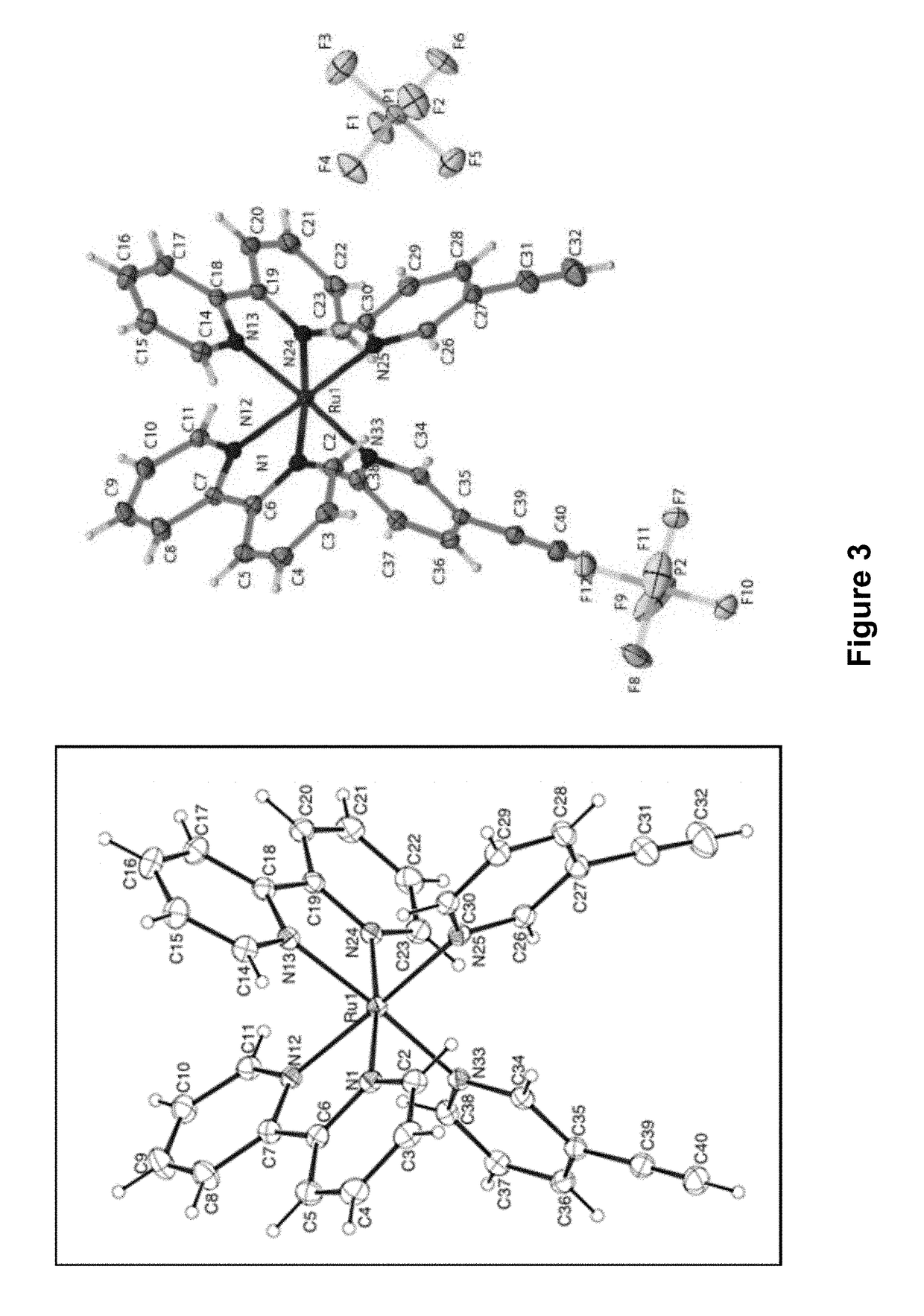Ruthenium-Based Photolinkers and Methods of Use
a technology of photolinkers and ruthenium, applied in the field of ruthenium-based photolinkers and methods of use, can solve the problems of limiting the potential for multiplexing experiments involving two (or more) orthogonally caged compounds, and slowing such developmen
- Summary
- Abstract
- Description
- Claims
- Application Information
AI Technical Summary
Benefits of technology
Problems solved by technology
Method used
Image
Examples
experimental examples
[0205]The invention is further described in detail by reference to the following experimental examples. These examples are provided for purposes of illustration only, and are not intended to be limiting unless otherwise specified. Thus, the invention should in no way be construed as being limited to the following examples, but rather, should be construed to encompass any and all variations which become evident as a result of the teaching provided herein.
[0206]Without further description, it is believed that one of ordinary skill in the art can, using the preceding description and the following illustrative examples, make and utilize the present invention and practice the claimed methods. The following working examples therefore, specifically point out the preferred embodiments of the present invention, and are not to be construed as limiting in any way the remainder of the disclosure.
example 1
-Caged Antisense Morpholinos for Regulating Gene Expression in Zebrafish Embryos
[0207]Described herein is a visible light-responsive antisense morpholino (MO) oligonucleotide, the first example which was circularized using a ruthenium bis-(3-ethynylpyridine) (Ru(3-EP)2) (RuBEP) photocleavable linker. RuBEP was reacted stoichiometrically with a 25mer DNA or MO oligonucleotide functionalized with 3′ and 5′ terminal azides, via Cu(I)-mediated [3+2] Huisgen cycloaddition reaction. These results demonstrate a Ru-photolinker amenable to caging oligonucleotides and other large biomolecules, while bypassing the harsh synthetic conditions typically required for ligand substitution at Ru2+, and avoiding direct reaction between biomolecules and Ru2+. RuBEP-caged circular morpholinos (Ru-cMOs) targeting two early developmental zebrafish genes, chordin and notail, were synthesized and tested in vivo. One-cell-stage zebrafish embryos microinjected with Ru-cMO and incubated in the dark for 24 h de...
example 2
of Exemplary Compounds of the Invention
[0257]Compounds [Ru(bpy)2(4-pentynenitrile)2][Cl]2 (Ru420) and [Ru(biq)2(4-pentynenitrile)2][Cl]2 (Ru530) are compounds of the invention which are useful for multiplexing of DNA and morpholino oligonucleotides (FIG. 25A). Ru420 and Ru530 can be selectively activated (FIG. 25B), and can be combined with a nitrobenzyl linker for further multiplexing.
Synthesis of [Ru(bpy)2(4-pentynenitrile)2][Cl]2 (Ru420)
[0258]104.4 mg (0.20 mmol) Ru(bpy)2Cl2 and 114 mg (0.44 mmol, 2.2 eq) AgSO3CF3 were dissolved in 10 mL of methanol, and stirred at room temperature for 45 min. Solid AgCl was filtered out, then 87.5 μL (0.1 mmol, 5 eq) 4-pentynenitrile was added. The reaction was heated to 70° C. for 45 min until the color changed from red to yellow. After the reaction was removed from heat, 10 mL DI water was added, and the methanol was removed under reduced pressure. Solid NH4PF6 (approx. 0.1 g) was added to the solution, and the PF6 salt was extracted by dichlo...
PUM
| Property | Measurement | Unit |
|---|---|---|
| mass | aaaaa | aaaaa |
| temperature | aaaaa | aaaaa |
| volume | aaaaa | aaaaa |
Abstract
Description
Claims
Application Information
 Login to View More
Login to View More - R&D
- Intellectual Property
- Life Sciences
- Materials
- Tech Scout
- Unparalleled Data Quality
- Higher Quality Content
- 60% Fewer Hallucinations
Browse by: Latest US Patents, China's latest patents, Technical Efficacy Thesaurus, Application Domain, Technology Topic, Popular Technical Reports.
© 2025 PatSnap. All rights reserved.Legal|Privacy policy|Modern Slavery Act Transparency Statement|Sitemap|About US| Contact US: help@patsnap.com



